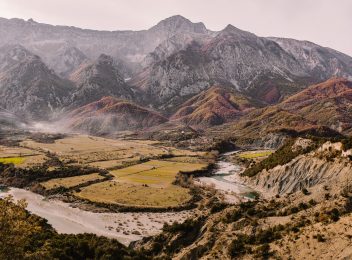If you are interested in Grama (or Grammata) Bay and would like to find out more about the specific reasons why you should visit this spectacular beach and monument of culture, read our short interview with expert Dr. Ols Lafe, Director of the Center for the Development of Ancient and Medieval Albanian Heritage, on the special nature of Grama Bay and the tour he leads there.
What should we expect from a tour in Grama Bay?
A tour in Grama Bay is the very culmination of a visit in the western part of the Karaburun Peninsula, when the weather permits sailing from Vlora or Dhërmi. A comprehensive and shorter tour would be that of sailing from Dhërmi which, after making a few brief stops at St. Andrew Bay and the Blue Cave, finally arrives at the tranquil and picturesque Grama Bay.
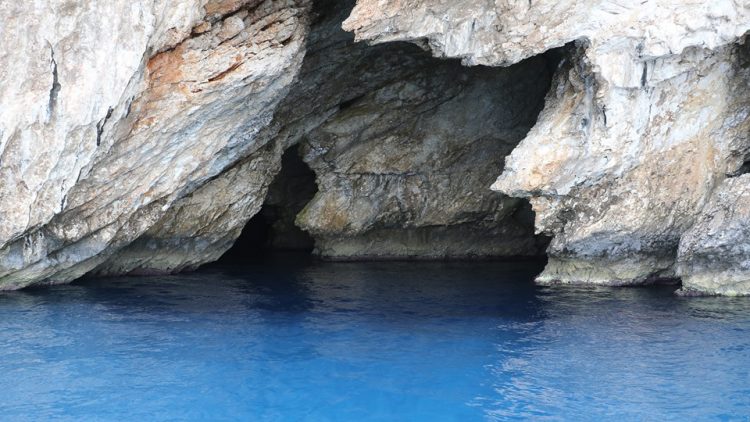
The Blue Cave, photo by IntoAlbania.
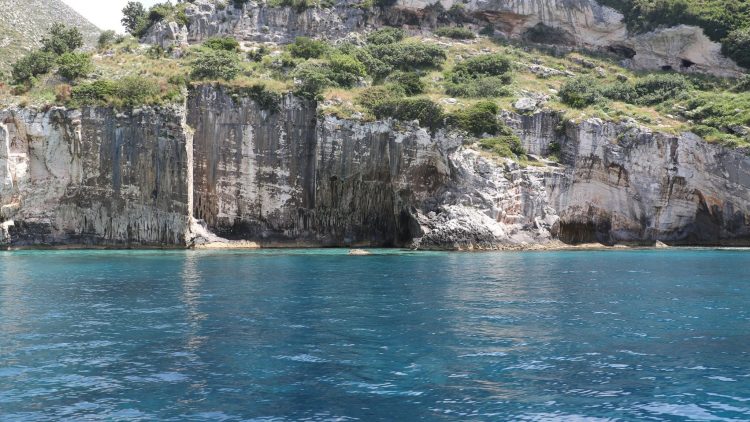
Arriving at Grama Bay. Photo by IntoAlbania.
It is precisely here that many surprises of this place are unraveled. The bay takes its name from the 1500 rock inscriptions from various historical periods, dating as far back as the 3rd century B.C all the way to the 19th century.Some very prominent names are present in these inscriptions, including that of the Byzantine Emperor John V Palaiologos.
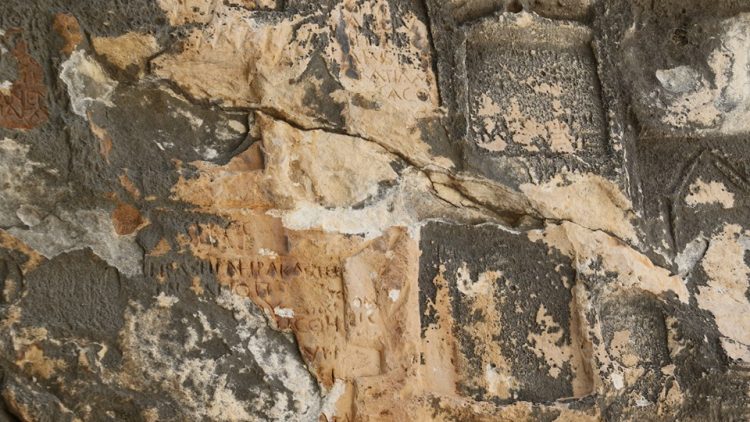
Some of the oldest inscriptions at Grama Bay, photo by IntoAlbania.
(Note: Another fascinating phenomenon here is the Socialist-era inscriptions made by soldiers stationed there. You will find these types of inscriptions in almost every destination that was under army control before the ‘90s. In addition, there are even more recent inscriptions and some very unfortunate vandalism of a few of the ancient inscriptions.)
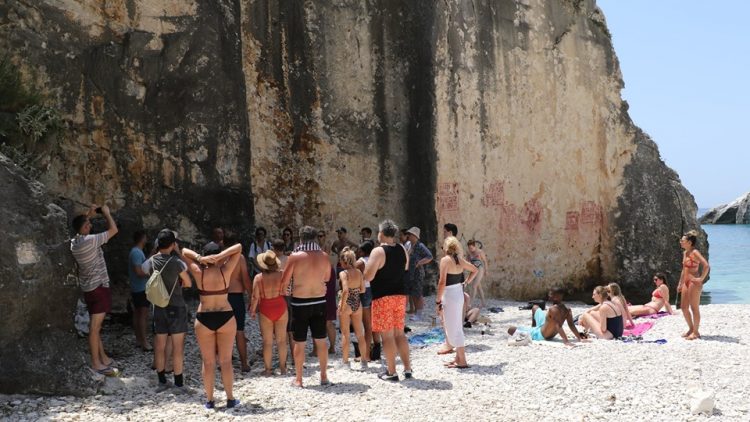
One of the tours at Grama Bay offered by Ols Lafe. Photo by IntoAlbania.
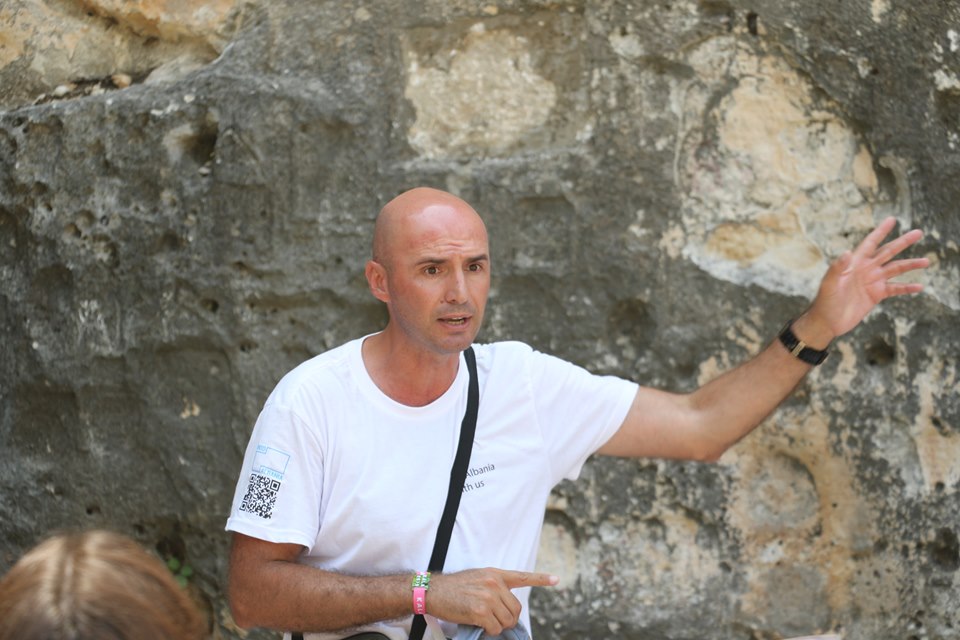
Ols Lafe, photo by IntoAlbania.
What gives these inscriptions their great significance?
Grama’s inscriptions are highly valuable because, in the first place, they have been created on the vertical sides of the rock, carved out for the purpose of becoming quarries during antiquity. These ancient inscriptions are dedicated to the Dioscuri, known as the protectors of mariners in antiquity, while the inscriptions from the Middle Ages represent prayers to God. It is thought that all inscriptions belong to seafarers who had either survived a shipwreck or taken shelter there, waiting for the storms to pass before they could resume sailing.
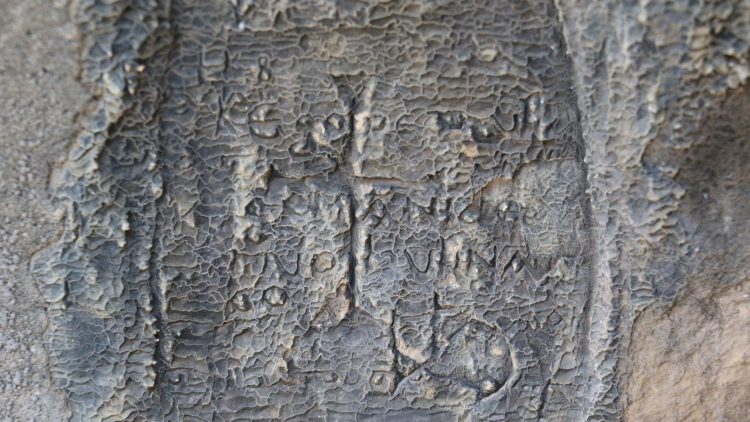
Inscriptions at Grama Bay, photo by IntoAlbania.
Which one is the earliest inscription?
The earliest inscriptions are the ones that date back to more than 2300 years ago. (For more detailed information, click here)
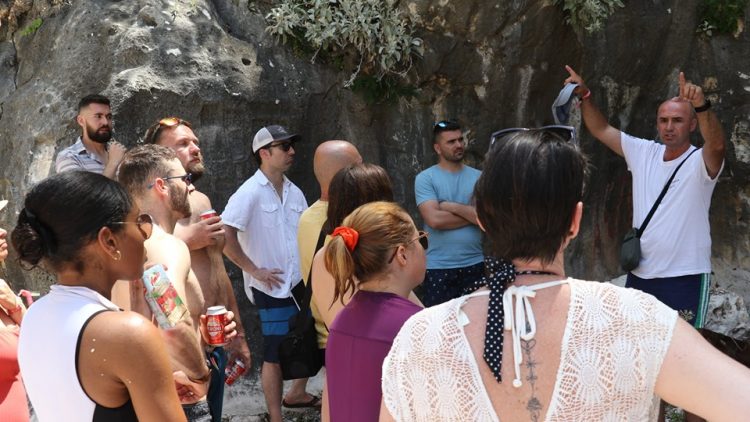
One of the tours at Grama Bay offered by Ols Lafe. Photo by IntoAlbania.
How popular is Grama among tourists today?
Lately, Grama Bay has become a favorite among tourists, not only for those who opt for the shorter journey of sailing to the destination but also for hundreds of others, who prefer to take the long way here by hiking and then camping out. This has essentially turned Grama into a year-round destination where, even with a lack of services and conditions (with the exception of the summer months), it remains a favorite spot among both local and international tourists.
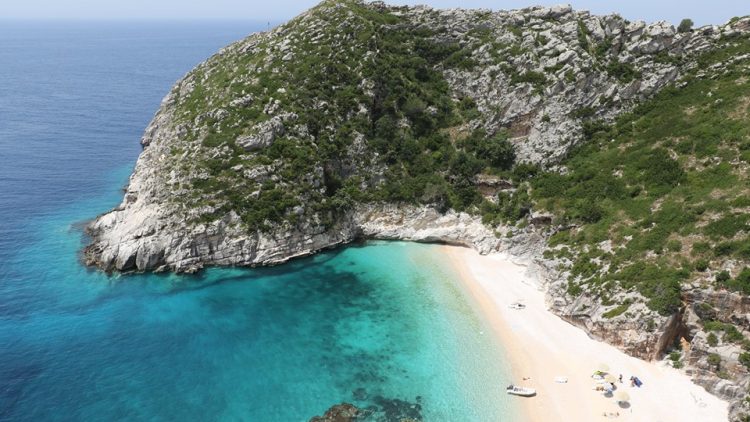
Grama Bay, photo by IntoAlbania.
What should visitors to this destination take into special consideration?
Visitors should be very careful about preserving the inscriptions. They should not touch or do anything that can potentially harm them. The only way to protect this extraordinarily valuable site is if each and every person who visits it contributes to its safe-keeping and inhibits its rapid deterioration.
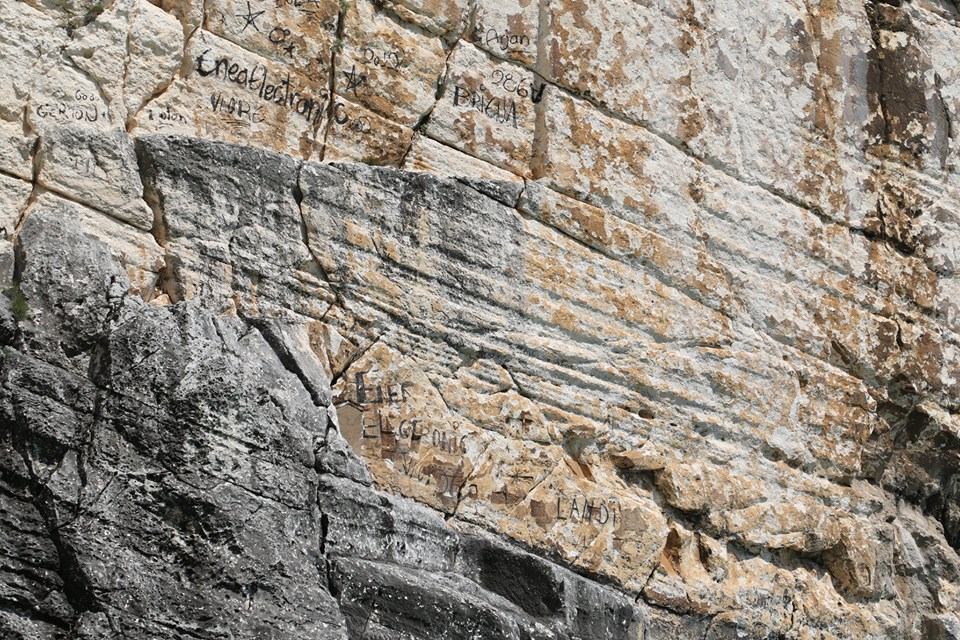
Grama Bay inscriptions, photo by IntoAlbania.
How do you imagine the ideal future of this destination?
I see Grama’s future as the ideal of any of the touristic cultural and natural sites of our country: year-round management, regular monitoring (especially from the sea), awareness campaigns for locals who visit it regularly, educational initiatives for the new generation, campaigns that encourage not only young but older individuals to visit the site, an introduction to untouched nature as well as discussions on the best and most accurate ways of promoting this site to both local and international audiences. An asset of this caliber can quickly turn into a success story and can serve as an inspiration for similar future initiatives in the country.
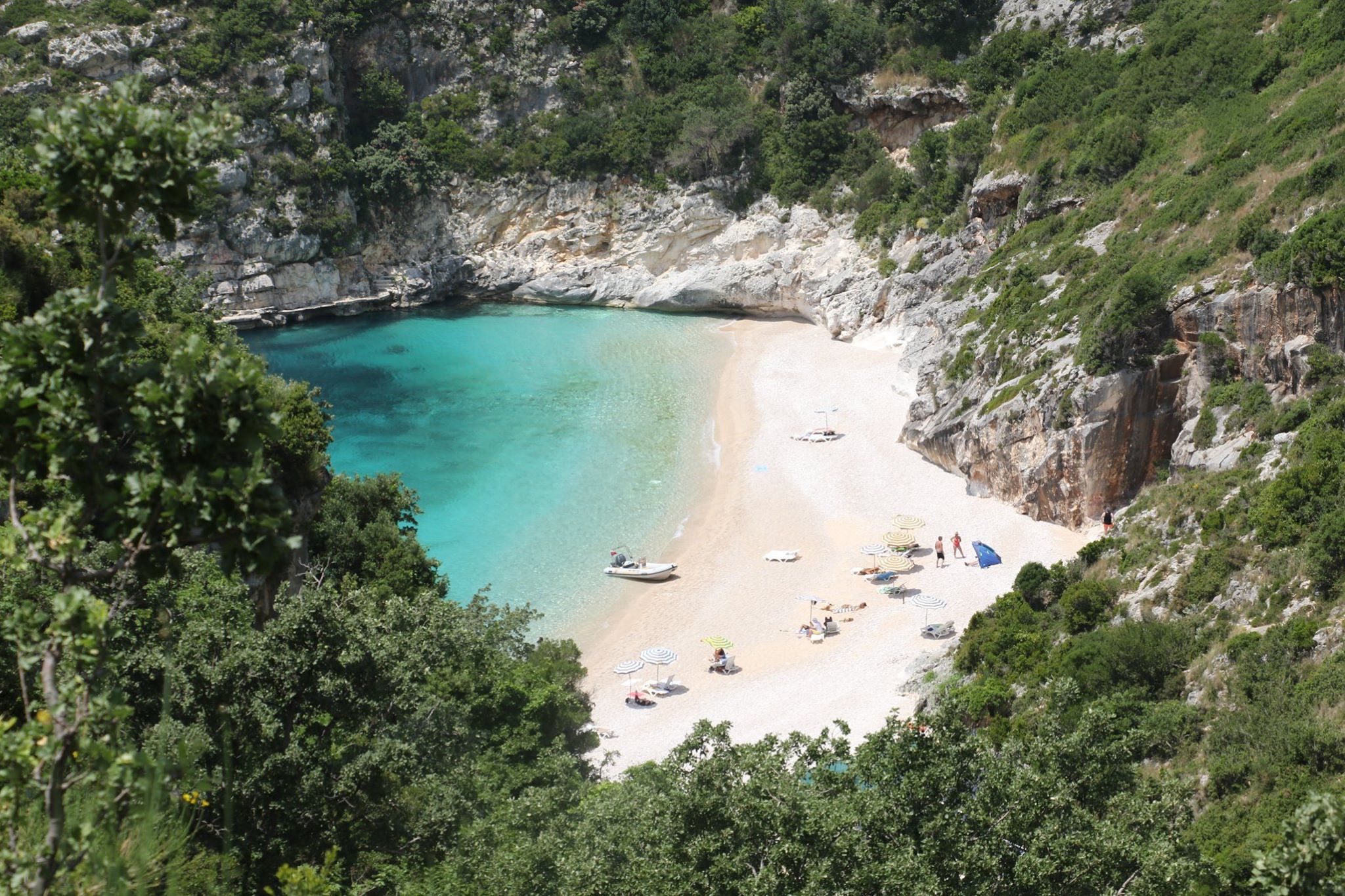
Grama Bay, photo by IntoAlbania.
Dr. Ols Lafe is an archaeologist who has studied History and Archeology at the University of Tirana, Albania. He has completed his M.A. at the University of Cincinnati, Ohio (USA) and his doctoral studies on Cultural Heritage Management at the University of Tirana. He is currently Director of the Center for the Development of Ancient and Medieval Albanian Heritage at Aleksandër Moisiu University in Durrës. Previously, he has been Director of the Cabinet and Cultural Heritage Advisor for the President of the Republic, Director of Cultural Heritage at the Ministry of Culture and Archaeologist at the Tirana Institute of Archeology.













